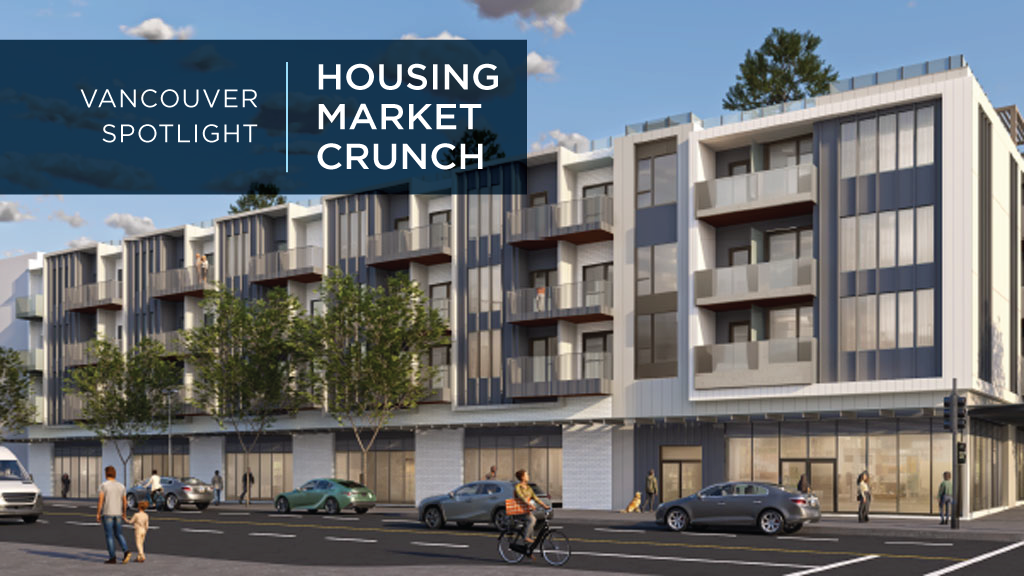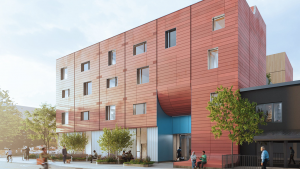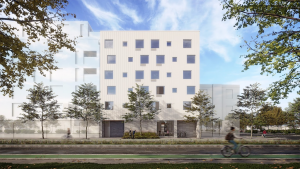According to an April 2024 Royal Bank of Canada (RBC) report on housing affordability, now is “the toughest time ever to afford a home as soaring interest costs keep raising the bar.”
In the fourth quarter of 2023, a household earning a median income needed to spend 63.5 per cent of it to cover the costs of owning an average home at market price. That’s an increase from 61.8 per cent in Q3 2023.
RBC reported housing affordability worsened in all of the markets it tracks, with Vancouver, Victoria and Toronto faring the worst.
The prospects for buying a home in Vancouver are “now at full-blown crisis levels. It’s never been as expensive to own a home anywhere, anytime in Canada as it was in Vancouver in the fourth quarter.”
At 106.4 per cent, the share of a median income needed to cover ownership costs means that only a few high-income earners can afford to buy a house.
Although Vancouver needs plenty of new housing, it is limited in the ways it can grow.
Boxed in by the Pacific to the west, mountains to the north and the U.S. border to the south, the opportunities to grow outward are limited. So the city is growing upward.
There are several examples of this phenomenon in the west side residential neighbourhood of Kitsilano.
Here Gracorp Properties has under development a project called Kits East, near the informal eastern boundary of Kitsilano.
It will replace a 35-unit apartment building of 1970s vintage with a 20-storey rental tower.
The building will have 183 units, of which 35 will be below-market rental units.
That number is based on setting aside 20 per cent of the residential floor area for below-market rental housing, according to guidelines laid out in the city’s Broadway Plan.
Kits East is located a short distance from the future Arbutus Station of the extended Skytrain Millennium Line (completion expected in 2026) and the 99 B-Line bus exchange.
Gracorp is also proposing to redevelop another apartment building from the 1970s, a three-storey, 35-unit structure located two blocks down West 7th Avenue from Kits East.
The proposal is to build a 20-storey tower with 100 per cent residential rental housing.
The plan is for 147 market rental units and 35 below-market rental units.
Not all new residential developments in Kitsilano reach for the sky.
Just a few blocks further west, Jim Pattison Developments has applied for a development permit to construct a much shorter building, a four-storey, mixed-use structure on West Broadway near the corner of Balaclava.
Pattison is a colourful Vancouver billionaire who owns many revenue-producing assets and is not expected to have any difficulty financing the project.
The plan is for a grocery store on the main floor and three levels of strata units above.
The 61 market condominiums will comprise 12 studio units, 28 one-bedroom units, 14 two-bedroom units and seven three-bedroom units.
The redevelopment replaces six small retail businesses and joins three five-storey residential buildings on the same side of Broadway.
Directly across the street from the new development are three other five-storey residential buildings with retail on the ground level.
Because the project conforms to the site’s existing C-2C zoning, it doesn’t require re-zoning, which might facilitate city approval.
“The city has been promising much quicker approval review times,” says Christina DeMarco, a former urban planner. “So this should be a good test, since it conforms to existing zoning and looks straightforward.”
Vancouver developer and retired architect Michael Geller says the Broadway project is a good fit for the neighbourhood.
“It’s not yet another highrise,” he says. “The project is consistent with the other residential projects that have been approved along Broadway and 4th Avenue.”
Geller says that, although there is indeed a housing crisis in Canada and especially in the Lower Mainland, it doesn’t follow that we should try to build as high as possible or as dense as possible.
“We should not be compromising good urban design principles that respect the nearby properties,” says Geller. “We need to acknowledge that, over time, cities and their population densities have to change. But there are better ways to do it than by erecting 18-storey towers all over the place.
“We need to have a serious discussion about adding affordable housing to the housing stock and how big residential developments should be.”
Geller says Vancouver needs more projects like the one on Broadway.
“Thirty or 40 years ago, no developer would have put condos above a grocery store, because no prospective condo purchaser would have wanted to live there,” he says. “But now it’s different. A new grocery store, particularly a gourmet grocery store (Pattison owns several), is an attractive venue for condos.”
Arny Wise, retired developer and president of Synergy Developments Inc., is also a fan of the Pattison development.
“I’m absolutely in favour of it,” says Wise. “It fits in with what’s already on the street, where there are other buildings like it. It’s a perfect way to add density to the neighbourhood.”












Recent Comments
comments for this post are closed